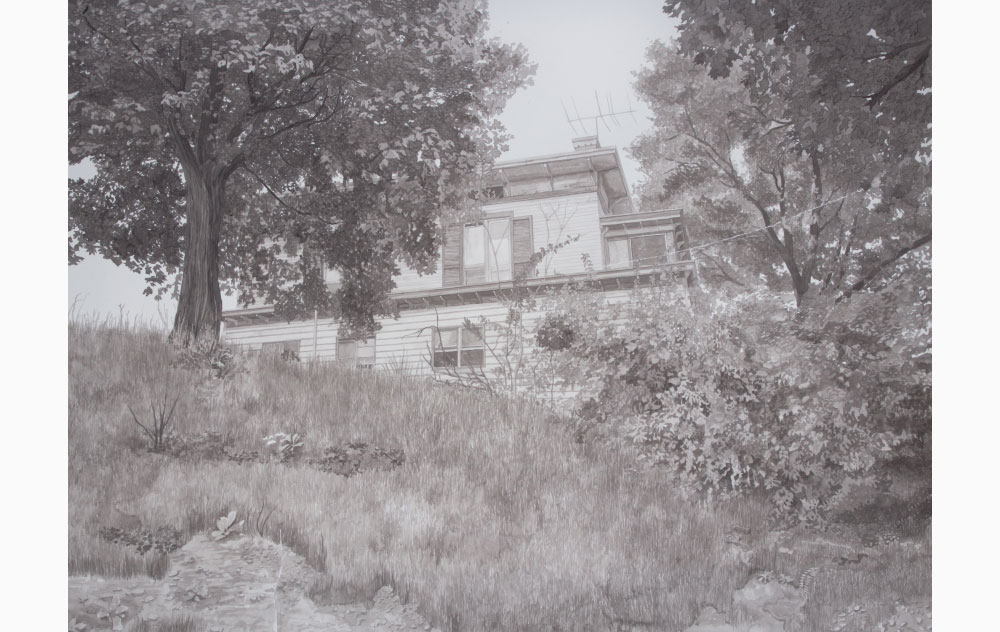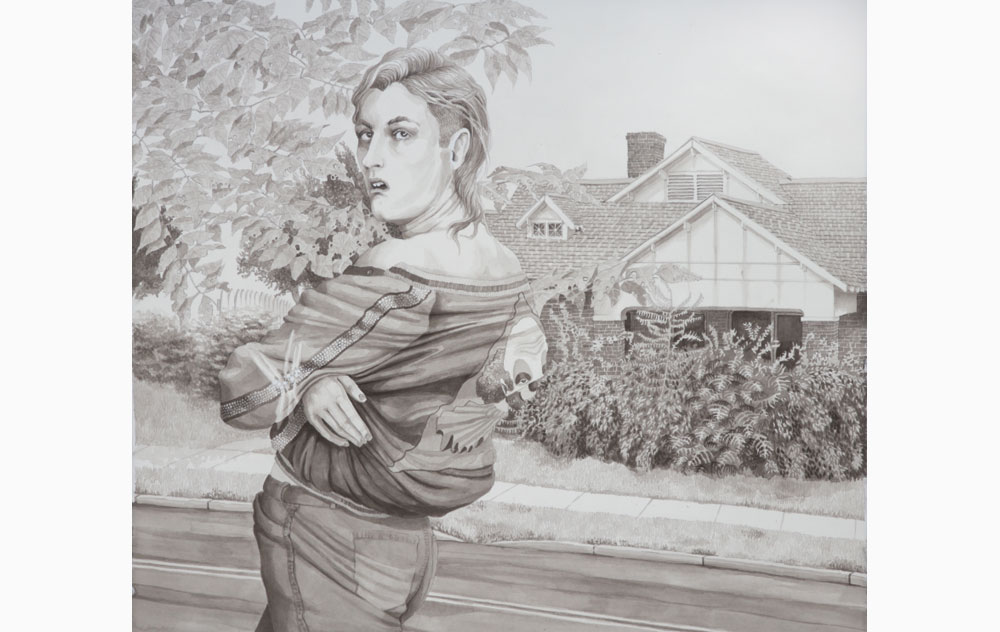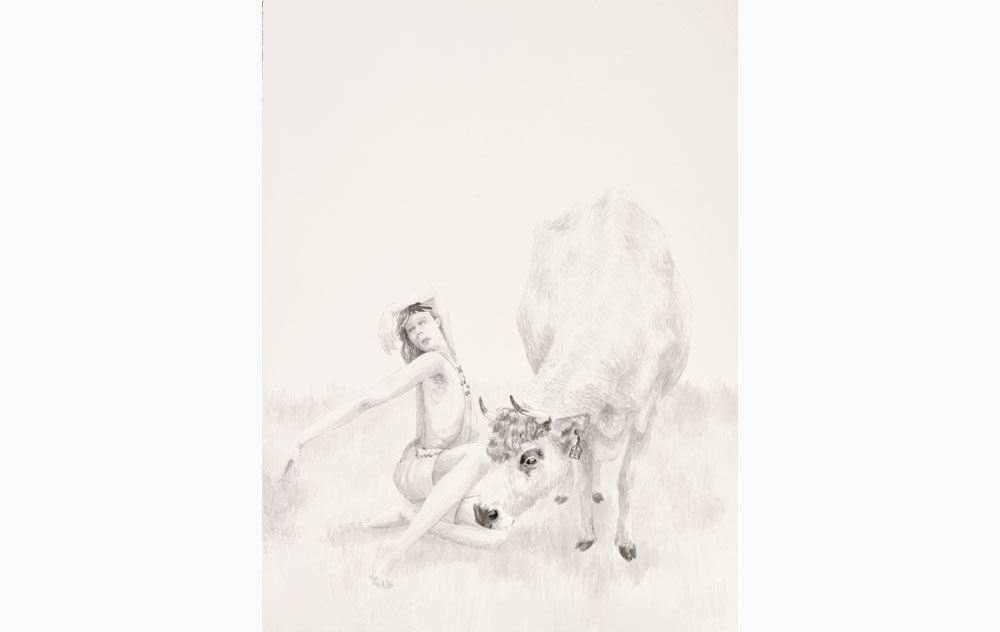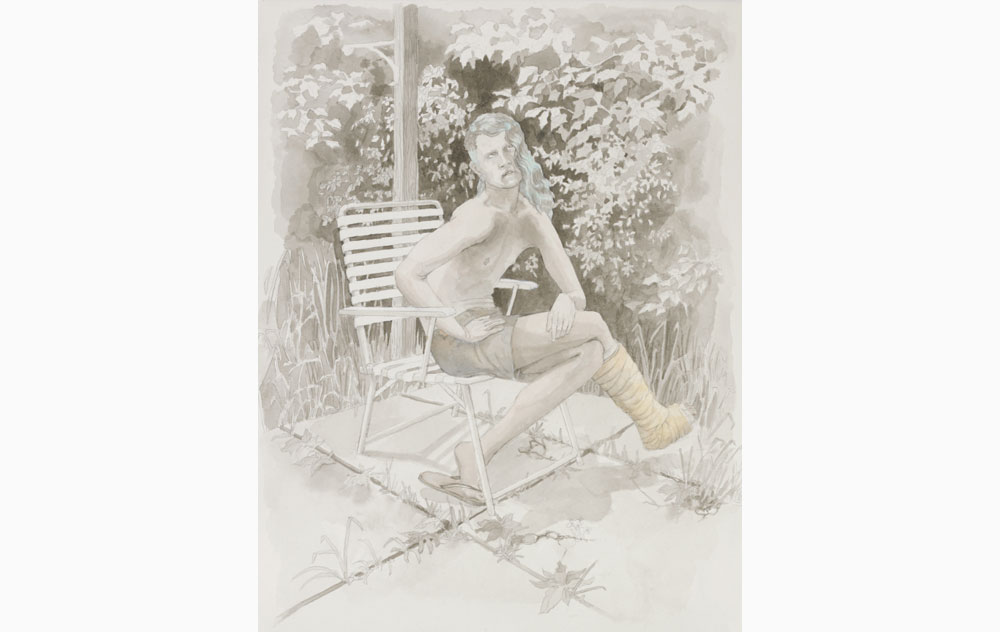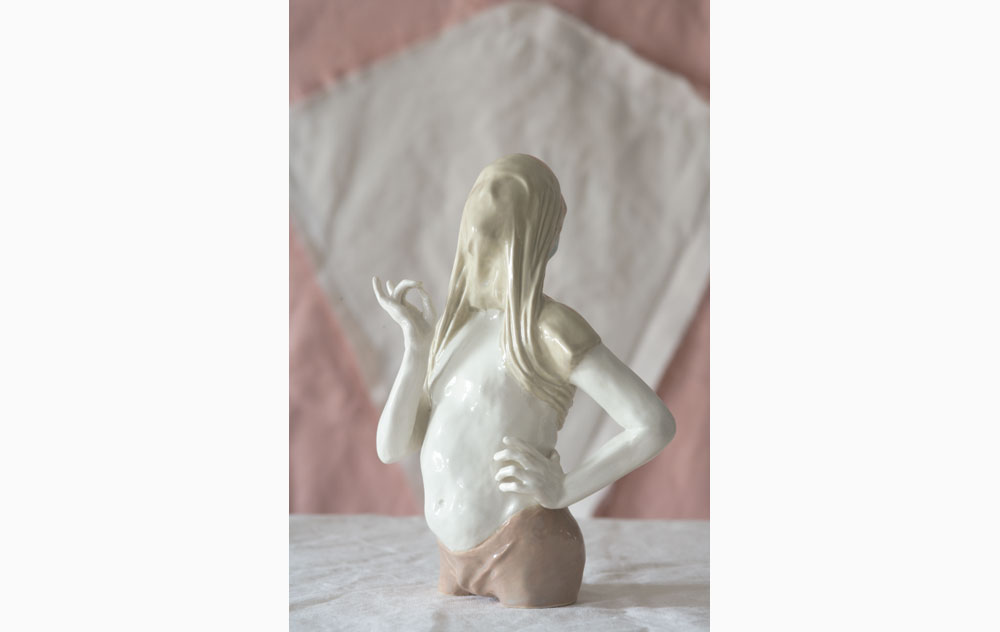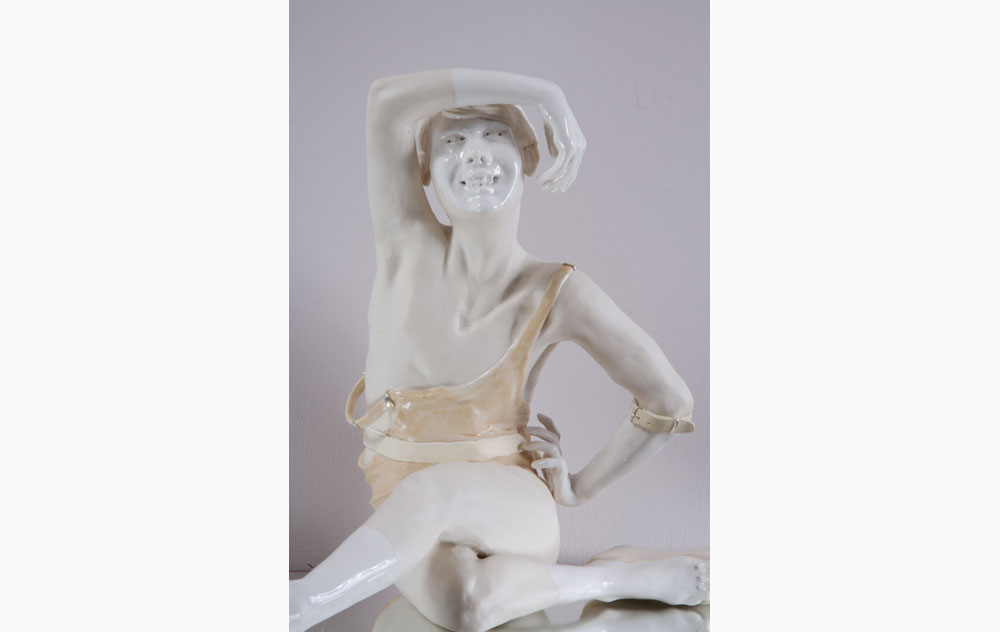FROM THE ARCHIVE: JARED BUCKHEISTER, SPRING 2009
We’ve been around awhile now, and we know a lot of our readers might not have had the opportunity to experience our earlier issues. So we wanted to give you the chance to discover one of our favorite stories from our archive every Friday. Some of them feature actors, musicians, or artists who eventually made it big, talents we are proud to have tapped early in their careers. Some have brilliant writing, and some have beautiful photography. Some have both. But all of them are so great we thought they deserved a second chance. This week we present Givenchy designer Riccardo Tisci’s Spring 2009 conversation with filmmaker-photographer-illustrator-ceramicist (and old friend) Jared Buckheister.
ARTIST JARED BUCKHEISTER AND DESIGNER RICCARDO TISCI GREW UP A WORLD APART, BUT LATELY THEY KEEP FINDING SIMILARITIES IN THEIR LIFE STORIES AND THE WAY THEY WORK, AS WELL AS A SHARED PENCHANT FOR ANYTHING DARK, ROMANTIC, AND BEAUTIFULLY FRAGILE. THE TWO RECENTLY SPOKE ABOUT VISUAL LANGUAGE, THE DICHOTOMY OF CERAMICS, AND REVIVING BOG BODIES FOR 2009
RICCARDO TISCI Why did you become an artist?
JARED BUCKHEISTER Well, I started doing photography, and I felt like I was taking other people’s pictures. It didn’t make sense to me. I think the nicest images I ever made were the ones I took with you when I was in Italy. But when I came back to New York, I was having to work with so many other people who I didn’t really connect with, so I’d work really hard on a project and at the end of the day I didn’t care about what I’d made. I started doing drawings just because I had complete control over what I was making. Also the things I wanted to talk about were things I couldn’t photograph.
RT Do you draw places and situations that are part of your life, or are they things you’re looking for but don’t actually exist?
JB There are really no boundaries. It’s based on memory but you can accentuate certain things. It’s much easier for me to communicate through a drawing than through a photograph.
RT Right now you’re in the beginning of your career, but you’re also in the best moments because you’re able to use different languages to communicate one message. You use illustration, which is fantasy, and it’s really primary and child-like. Then you have ceramics, which is very delicate and fragile. And then you have video, which is a new technology. How do you communicate your message through all these different methods?
JB I originally started the drawings because it’s what I had access to. My apartment could accommodate them, I could afford the materials, and it just started making sense. By the time I got to ceramics I’d already been at it for four years, and I felt like I’d gotten to a place with my technique where I was saying what I wanted to say, and I wasn’t learning anything from my process. I also thought porcelain was a great way to memorialize the subjects I was working on in my drawings. But the video was something that just made sense as a moving image. I saw this person on the street in New York and he looked like maybe he had a borderline personality. He had this amazing style with clothes that looked like he had gotten them from a clothing bank. He had taken socks and put them on his hands and cut out the fingers, and his fingernails were painted black. And I immediately saw him as a moving image. I had been watching a lot of David Lynch movies at the time and it just made sense to work with film.
RT What is your relationship with your grandmother?
JB It’s amazing that you’re asking me that because I was just with her for twelve days. I have a really special relationship with her. Her house is the only house from my childhood that I can return to. My parents sold the house I grew up in, so I have a great connection not just with her but with that house. If there’s anyone in my family that’s an artist it would be her.
RT Ceramics is something that was so important at my mother’s and grandmother’s house. It’s really romantic and feminine, even though you think the technique of it is really masculine. It’s really amazing—clean, pure, modern, and at the same time, super romantic.
JB: Why did you ask about my grandmother?
RT Ceramics are very related to our grandmothers, something that grandmothers would collect, and it’s something that’s a little bit missing right now. Women today are attracted to different things. My mother and my grandmother were very tough women, because they were from poor families in the south of Italy. But they were, at the same time, very elegant and very romantic.
JB I get it. When you were talking about fantasy, I think that’s something we really have in common, especially with the work you’ve just been doing. In your Givenchy collection last September, there was a green dress that I thought was amazing.
RT The short one with…
JB Yeah, it had all kinds of details on top but it really reminded me of one of my porcelain pieces.
RT Sometimes it’s really good to see yourself in other’s people’s work. And with you, I think because we’ve known each other for ten years, we have a lot of things in common, even outside of our work. At the same time we have the romanticism and the darkness and this is why I think I’m attracted to your work very much.
JB When I was in Italy, you were the one who really motivated me. I was a little out of my element, but it was really great to know you because it encouraged me to get up and start photographing, and we made some really nice images. It’s funny that we’ve known each other for so long and we’re just now realizing that our origins are so similar.
RT It’s weird because I think we both come from very extreme backgrounds. When I think about America, I think about your work because, for me, it represents the real America. Also the fact that when I came to New York, you took me around…
JB Was that when Mariacarla was living up in Harlem?
RT Yes. Those were the best moments because when I came it was something very new, very different. Going to exhibitions, shopping for clothing…
JB There was snow everywhere.
RT Yes, it was really pure. And that’s extra amazing because after a long time we’ve both developed our own way to communicate. I’ve developed my style. You’ve developed a way to represent what you want to say, which is really amazing.
JB Thanks, Ricky.
RT There are lots of things that we never really say, and very often they’re retarded, but if you think about it we’re both very attracted to the American latina. We’re attracted to things that are very romantic and very delicate, but at the same time very sexual and very tough. I think we’re both also attracted to the fragility of the transsexual. We’re part of the club scene so naturally we’re around them quite a lot. It’s very weird, very strange, if you think about it, but also very beautiful, most importantly.
JB Yeah.
RT So now you’re working on something new?
JB I’m working on a project with my partner, with my boyfriend. We’re making these bodies, you know the bog bodies in the Netherlands?
RT Sure.
JB Well he’s a metalsmith and a sculptor and we were going through National Geographic about a year ago and had an idea to create these sculptures inspired by the bog bodies. So we made a skeleton out of porcelain, copper, and leather, with human hair, porcelain teeth, and wooden fingernails. It’s basically a life-size body. Apparently the Nazis wrote papers, sort of propaganda, on the bog bodies saying they were all homosexuals and prostitutes and that it’s part of tradition to sacrifice these people. So we had the idea to make vogue-ing bog bodies, which are these life-size bodies that are totally serving you a fashion pose. Our friend Robbie, who does hair for Mario Sorrenti, did the hair for it and it’s pretty amazing.
RT I want to work something out with Givenchy so that you can come to Paris, if it’s possible, to present your work to the European press and the European gallery scene. We have to do that, definitely, because it’s very rare to find your sensibility over there. Fashion and art are two different worlds but I feel we have so much in common.
JB The story of our lives is similar, in a way. So I think that everything else just kind of follows.
All images courtesy of the artist and Envoy Enterprises, New York.
